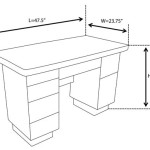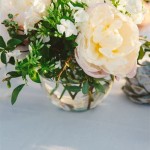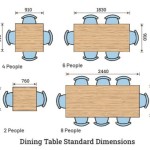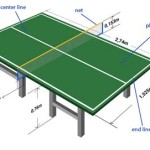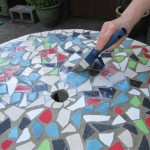```html
Shabby Chic Table Runner: A Guide to Rustic Elegance
Shabby chic, a design aesthetic rooted in comfort, vintage charm, and a touch of romanticism, has gained immense popularity in interior decorating. A central element in achieving this look for dining spaces is the shabby chic table runner. This article delves into the characteristics, selection criteria, care, and creative uses of shabby chic table runners, providing a comprehensive guide for those seeking to incorporate this design element into their homes.
The shabby chic style distinguishes itself from other design approaches through its emphasis on soft colors, distressed finishes, and the embrace of imperfections. Unlike modern minimalist styles, which prioritize clean lines and uniformity, shabby chic celebrates the beauty of age and the uniqueness of handcrafted or repurposed items. Furniture often features layers of paint, intentionally chipped surfaces, and a timeworn appearance. Fabrics are commonly natural, such as linen and cotton, and are often embellished with lace, embroidery, or floral patterns. The overall effect is a warm, inviting, and aesthetically pleasing environment that exudes comfort and a sense of history.
A table runner, by definition, is a narrow piece of fabric placed lengthwise down the center of a table. It serves both decorative and functional purposes. Decoratively, it adds visual interest, introduces color and texture, and complements the overall tablescape. Functionally, it can protect the table surface from heat, spills, and scratches, and can also serve as a backdrop for centerpieces and other decorative items.
When integrated into the shabby chic aesthetic, the table runner becomes a pivotal component in establishing the desired ambiance. It contributes to the room's character and softens the often harder lines of the dining table. The right table runner can instantly transform a plain table into a focal point, adding a touch of rustic elegance and charm.
Identifying Key Characteristics of Shabby Chic Table Runners
Several defining features distinguish a shabby chic table runner from other types of table linens. These characteristics relate to the materials used, the color palettes favored, and the types of embellishments incorporated.
Materials:
The quintessential shabby chic table runner is crafted from natural fabrics. Linen, with its inherent texture and slightly rumpled appearance, is a popular choice. Cotton, particularly bleached or aged cotton, is another excellent option, offering a softness and durability suitable for frequent use. Burlap, while coarser in texture, can also be incorporated to add a rustic touch. These fabrics often undergo processes to enhance their distressed appearance, such as washing to create a softened, faded look.Color Palettes:
The color palette associated with shabby chic is typically soft and muted. Whites, creams, pale pinks, light blues, and faded greens are commonly used. These colors create a sense of tranquility and airiness, contributing to the overall calming effect of the style. While brighter colors are less common, subtle hints of floral patterns or vintage-inspired prints in these muted tones can add visual interest without disrupting the overall aesthetic. The goal is to evoke a sense of faded elegance, reminiscent of vintage textiles.Embellishments:
Details play a significant role in defining the shabby chic table runner. Lace is a prevalent embellishment, adding a touch of femininity and romanticism. Crochet details, whether hand-crocheted or machine-made, lend a handcrafted feel to the runner. Embroidery, often featuring floral motifs or simple patterns, further enhances the vintage charm. Ruffles, fringe, and tassels can also be incorporated to add texture and visual appeal. These embellishments are often deliberately imperfect, adding to the overall sense of authenticity and lived-in beauty that characterizes the shabby chic style. Consider a runner with delicate floral embroidery along the edges or one trimmed with antique lace for a truly authentic feel.Selecting the Right Shabby Chic Table Runner
Choosing the ideal shabby chic table runner involves careful consideration of several factors, including table size, fabric durability, and the overall room decor. A runner that complements the existing aesthetic and fits the dimensions of the table is crucial for achieving a cohesive and visually appealing look.
Table Size and Shape:
The length of the table runner should be proportional to the size of the table. Ideally, the runner should extend beyond the edges of the table, creating an overhang. A general rule of thumb is to add 12 to 18 inches to the length of the table to determine the appropriate runner length. For instance, if the table is 60 inches long, a runner between 72 and 78 inches would be suitable. The width of the runner should also be considered, ensuring it is wide enough to accommodate centerpieces or other decorative items. For round tables, a square or round runner can be used, centered on the table. The shape of the runner should complement the shape of the table for a balanced aesthetic.Fabric Durability and Maintenance:
The choice of fabric should also take into account the intended use of the table runner. If the runner is intended for frequent use, a durable fabric such as cotton or a linen blend is recommended. These fabrics are relatively easy to care for and can withstand regular washing. Delicate fabrics like lace or those with intricate embellishments may require hand washing or professional cleaning. Consider the potential for spills and stains, and choose a fabric that is stain-resistant or easily treatable. Before purchasing, it is advisable to check the care instructions to ensure the runner aligns with the owner's maintenance capabilities.Coordinating with Decor:
The table runner should complement the existing decor of the room. Consider the color scheme, furniture style, and overall aesthetic. If the room features predominantly soft, muted tones, a table runner in a similar color palette will create a cohesive look. If the room has a more neutral color scheme, a table runner with a subtle pattern or texture can add visual interest without overwhelming the space. Pay attention to the details of the room, such as the style of the chairs, the lighting fixtures, and the wall art. The table runner should harmonize with these elements to create a unified and aesthetically pleasing environment. For instance, if the room features floral wallpaper, a table runner with a coordinating floral pattern can enhance the overall theme.Creative Uses and Styling Tips for Shabby Chic Table Runners
Beyond its traditional placement on a dining table, the shabby chic table runner can be creatively incorporated into various areas of the home to enhance the overall aesthetic. Strategic placement and styling can transform mundane spaces into charming and inviting areas.
Beyond the Dining Table:
A shabby chic table runner is not limited to the dining table. It can be used on a coffee table in the living room, adding a touch of vintage charm to the space. It can also be draped over a console table in the entryway, creating a welcoming and stylish focal point. In the bedroom, a table runner can be placed across the foot of the bed, adding texture and visual interest to the bedding. The versatility of the shabby chic table runner allows it to be incorporated into various areas of the home, enhancing the overall aesthetic and creating a cohesive design scheme.Layering with Other Linens:
Experimenting with layering different linens can create a visually rich and textured tablescape. A shabby chic table runner can be layered over a tablecloth in a complementary color or pattern. For example, a white linen tablecloth can be paired with a pale pink table runner, creating a soft and romantic look. Alternatively, a burlap tablecloth can be layered with a lace-trimmed table runner for a rustic and elegant contrast. Layering different textures and patterns adds depth and visual interest to the table setting, enhancing the overall dining experience.Accessorizing with Centerpieces:
The table runner serves as a foundation for creating stunning centerpieces. Consider using vintage-inspired items such as antique vases, candlesticks, or floral arrangements. Fresh flowers, particularly roses, peonies, and hydrangeas, are a natural complement to the shabby chic aesthetic. Groupings of candles in varying heights can create a warm and inviting ambiance. Incorporating natural elements such as driftwood, seashells, or pinecones can add a touch of rustic charm. The centerpiece should be proportional to the size of the table and should complement the color scheme and style of the table runner and the room. The goal is to create a visually appealing focal point that enhances the overall dining experience. ```
White Farmhouse Table Runner With Antique Lace Inset Rachel Ashwell Shabby Chic Couture

Table Runner Rustic White Linen Fringes Flax Cloth Soft Washed Ruffled

Shabby Chic Custom Table Runner Yellow Centerpiece Handmade Rustic Home Kitchen Dining Decor Gold Patterns Gift

Vintage Shabby Chic Valentine S Decor In The Dining Room French Blue Cottage

Shabby Chic Table Runner Blue Red Gray Woven Striped Decorative Runnerplatt Designs

10 Hessian Table Runners Sewed Edge Wedding Decoration Vintage Shabby Chic

Shabby Chic Linens Hallstrom Home

Ruffled Gingham Linen Table Runner Shabby Chic Checked Ruffles Cloth Plaid

Table Runner Shabby Chic Ruffled Wedding Linen Fringed Cloth Washed

Lace Table Runner Small Dresser Scarf Macrame Embroidered Runners With Exquisite Flower Vintage Shabby Chic For Wedding Holiday Dinning Com


